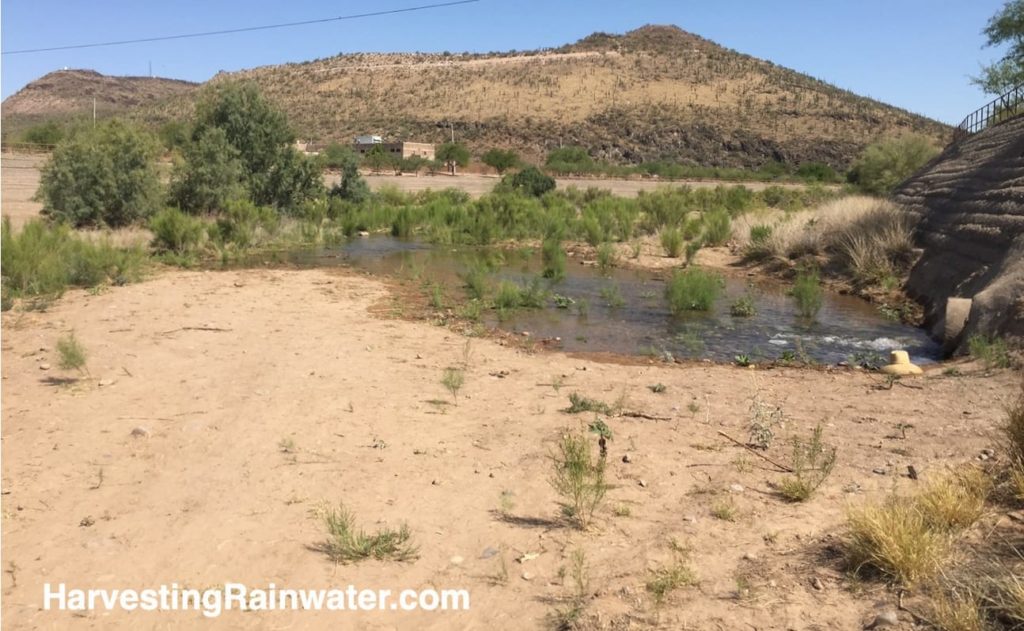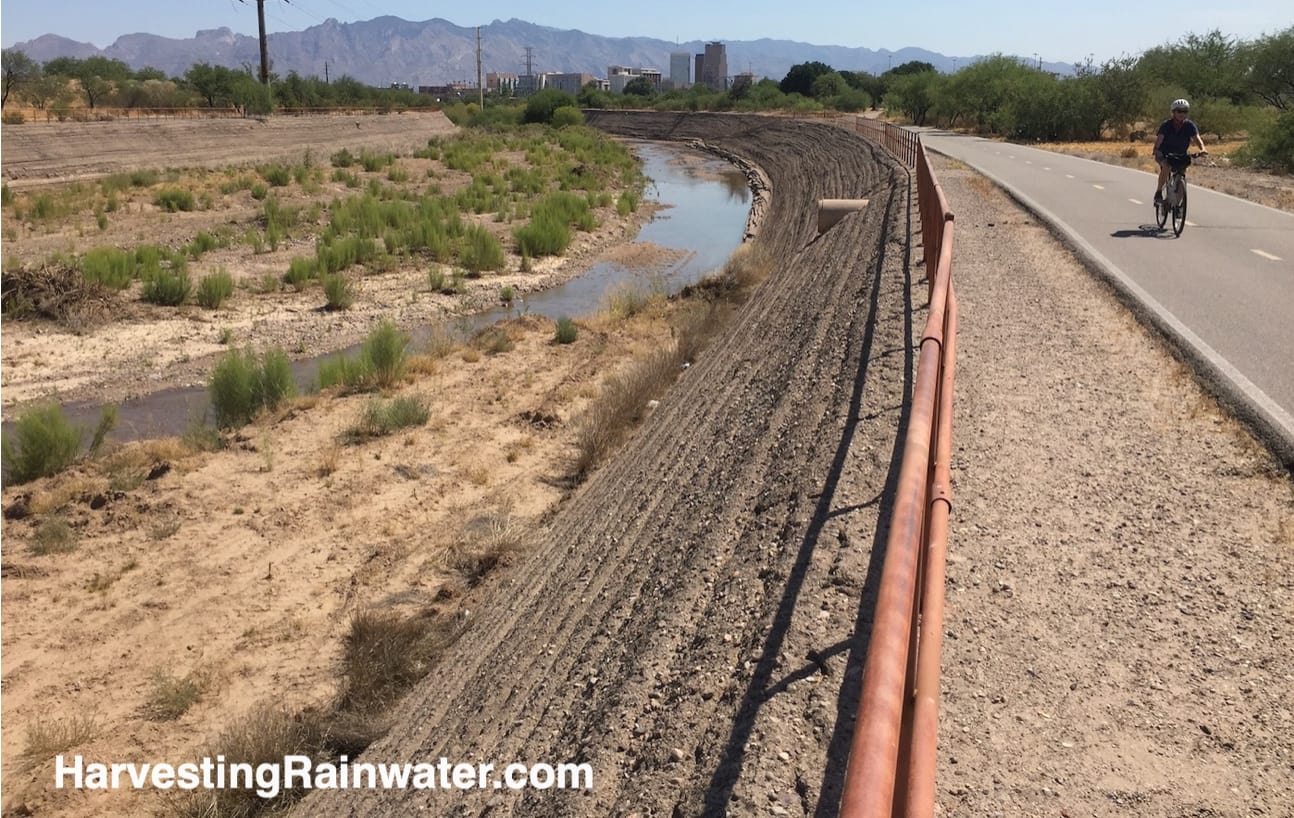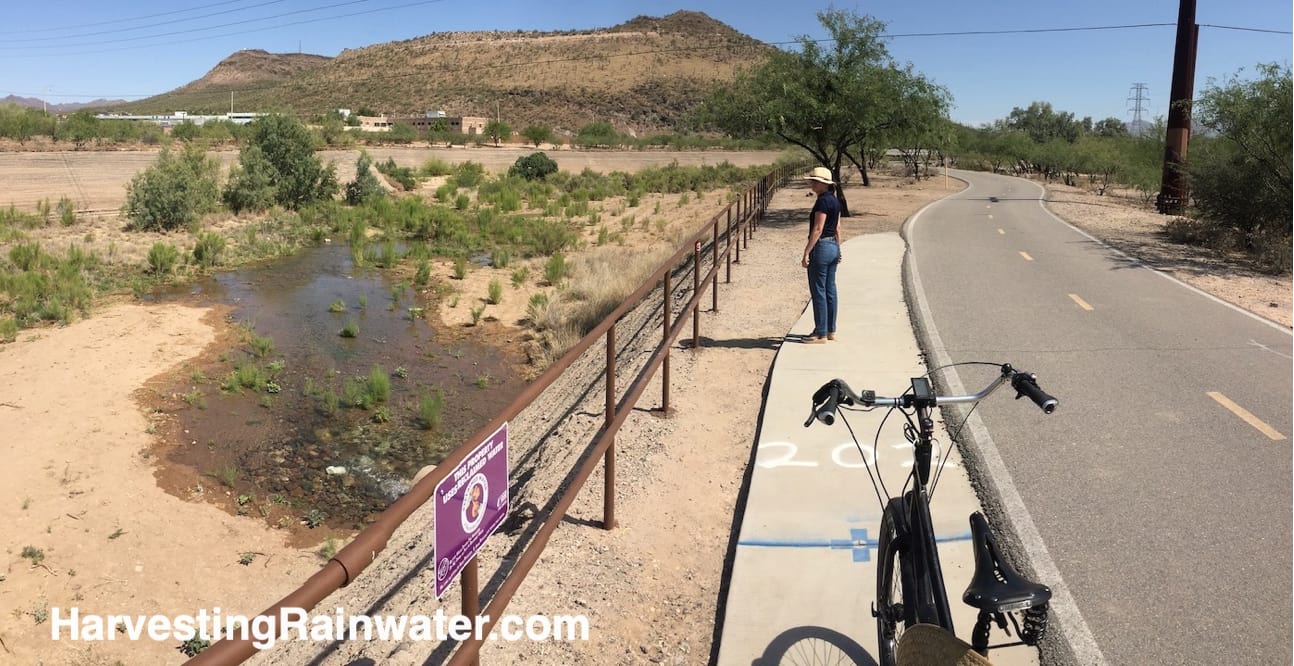Santa Cruz River Heritage Project
In 2019, the Santa Cruz River Heritage Project began pumping highly treated “waste” (sewer) water from Tucson’s Agua Nueva Wastewater Reclamation Facility to a point south of downtown Tucson and West Star Pass Boulevard, where it can then flow north within the Santa Cruz River bed to about the Cushing Street or Congress Street bridges as a way to bring a perennial water flow back to this stretch of the river.

Photo: Brad Lancaster, 6-2019
This water can provide habitat for pollution-sensitive invertebrates and endangered fish, like the Gila topminnow that are able to thrive in shallow water, and could sustain native willow, velvet mesquite, screwbean mesquite, canyon hackberry, and cottonwood trees—all of which were abundant along the Santa Cruz River before its perennial flow began to be eliminated in the early 1900s due to mismanagement of the river, our groundwater, and the watershed. Dragonflies and other riparian ecosystem life is now a regular site along this stretch of flowing water (and such life helps keep mosquitoes under control).
Up to 2.8 million gallons of treated “waste” water is discharged daily (3,150 acre-feet a year) to the Santa Cruz River. This added water brings perennial flow to this portion of the river, helping support native vegetation and wildlife along with recreational and economic opportunities. (Though such native vegetation could be enhanced, by removing existing non-native plants, and replacing them with native vegetation plantings). It also helps artificially recharge the aquifer.

Photo: Brad Lancaster 6-2019.

Photo: Brad Lancaster 6-2019.
To obtain a truly sustainable perennial flow in the Santa Cruz River, we need to bring back our groundwater levels to their historic levels before perennial flow began to cease in the early 1900s. The perennial flow of the river can then be sourced by the “overflow” of the groundwater table—the river being where the groundwater surfaces. See the Wa:k Hik dan Riparian Restoration Project on Tohono O’odham land near the San Xavier Mission for where this is starting to occur.
To do so, we need to infiltrate and give back more water to our groundwater table than we pump out or extract. This is being attempted at huge financial, energy, and environmental costs by artificially recharging sections of the Tucson Basin aquifer with water imported/pumped/extracted from the Colorado River via the CAP canal and treated at the Central Avra Valley Storage and Recovery Project (CAVSARP), from which the water is then pumped over the Tucson Mountains to the Tucson Basin.
But we can also naturally recharge our groundwater by infiltrating, NOT draining, the rain that falls freely from the sky onto the Tucson Basin.
More rain falls on the surface area of Tucson in an average year of rainfall, than all of Tucson’s residents consume of municipal water in a year. But if we wastefully drain it away (which is what most in the city currently do), only a fraction of that rainwater remains. See the full-color editions of the books Rainwater Harvesting for Drylands and Beyond for many ways Tucson’s rain could be beneficially harvested.
For more information on the Santa Cruz River Heritage Project see here.
Where:
Just south of Starr Pass Boulevard,best viewed from The Loop bicycle/pedestrian path on the east bank of the Santa Cruz River
32.20272, -110.98903
Hours: Always open
Cost: Free
This location is included in the following tours:
See the new, full-color, revised editions of Brad’s award-winning books
– available a deep discount, direct from Brad:

Volume 1

